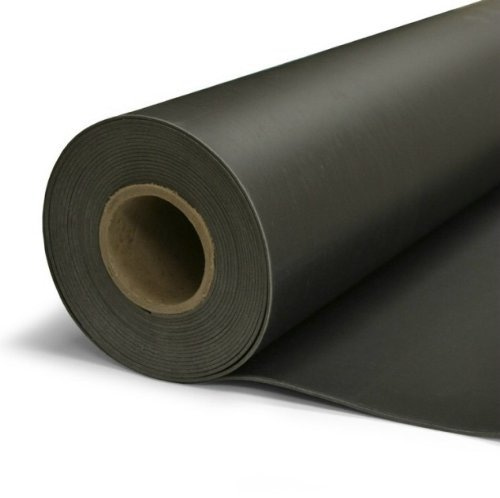Eliminating or managing noise is a tricky proposition that requires a combination of insulation and mass-loaded vinyl (MLV) fully encapsulating the space that is to be silenced. Partial noise can be eliminated by building a buffer between the noise source and the space to be quieted.
Table of Contents
What is MLV?
MLV is the preferred solution for soundproofing interiors easily and effectively. It packs a large amount of mass in a minimal amount of thickness. MLV can be used in many places such as walls and ceilings, under the carpet to soundproof the room’s ceiling below, or wrapped around noisy pipes. These products are primarily designed for controlling airborne sound; however, they do possess anti-vibration properties. This will better manage mid to high-range frequencies but the poor performance of low or bass-like sound.
Mass Loaded Vinyl (MLV) applications
Mass is a critical component in sound control and works by simply stopping sound from vibrating through its structure. Mass Loaded Vinyl (MLV) is an effective material to use in lining soundproofing curtains or blankets.
At even just ½LB per sq ft, MLV can produce a 25 STC rating, which is 1/16” thickness. You can get up to 35 STC by using 2lb per sq ft and 1/4” thickness; however, this is slightly more difficult to work with.
National Consumer Center offers you a chance to get a $500 gift card to Amazon. The payouts are quick, and you can use the Gift Card to pay for some of your Amazon products.
DIY Installation Guide for Mass Loaded Vinyl (MLV)
Setting Up for Success with MLV
When it comes to soundproofing, Mass Loaded Vinyl (MLV) is a heavyweight champion—literally. Whether you’re choosing Soundsulate or Peacemaker, the installation process is crucial to maximizing their sound-dampening powers. Don’t worry; as a DIY enthusiast, I’ll break it down so you can easily tackle this project with confidence.
Step-by-Step Installation: Walls and Ceilings
- Secure Framework: Start by ensuring you have a solid frame structure in place. This could be the existing studs in your walls or joists in your ceilings. For both Soundsulate 1 lb mass-loaded vinyl MLV and Peacemaker, a sturdy foundation is key.
- Roll Out the MLV: Measure the area you’re covering and cut your MLV accordingly. Remember, MLV is flexible but dense, so a sharp utility knife will be your best friend here.
- Fasten MLV: Affix the MLV directly to your walls or ceilings. You can use staples, nails, or even specialized MLV adhesive for a secure fit. For soundsulate sound absorbing acoustical drop ceiling tiles, ensure the MLV is cut to neatly fit each tile space.
- Seal the Seams: Use acoustic sealant along the edges of each MLV piece to ensure there are no gaps. Overlapping the edges by about an inch before sealing is a pro tip for superior sound blockage.
- Top with Drywall: Especially for interior applications, covering MLV with drywall not only protects it but also adds an extra layer of soundproofing. Plus, it keeps your space looking neat and ready for paint or wallpaper.
Floor and Pipe Applications
- Under Carpets: For floor applications, like placing MLV under the carpet, ensure the surface is clean and flat. Laying down MLV before the carpet pad and carpet enhances soundproofing from the ground up.
- Wrapping Pipes: To reduce noise from clanging pipes, wrap MLV around them, securing it with tape. This application is straightforward and significantly reduces sound transmission through plumbing.
Important Considerations
- Aesthetic Impact: While MLV can technically be used outside, it’s not recommended due to aesthetic reasons. Inside, hidden behind walls, floors, or ceilings, MLV works its magic unseen.
- Durability: MLV is built tough, but for floor applications where there’s direct foot traffic, it’s better protected under a carpet or flooring material.
Remember: Soundproofing works best when you address the noise source directly. MLV’s effectiveness shines when strategically placed between you and the noise. With its mass, MLV makes a considerable difference in reducing sound travel—making your home or workspace a haven of peace.
By following these steps and keeping the key considerations in mind, installing Soundsulate or Peacemaker MLV can be a rewarding weekend project. Not only will you enhance your living space’s comfort, but you’ll also gain the satisfaction of having tackled the job yourself.
Conclusion
Mass Loaded Vinyl (MLV) has been the trusted material in sound management for some time now. Mass is a critical component in sound control and works by simply stopping sound from being able to vibrate through its structure. Mass Loaded Vinyl (MLV) is an effective material to use in lining soundproofing curtains or blankets.
Good luck, and happy soundproofing!

